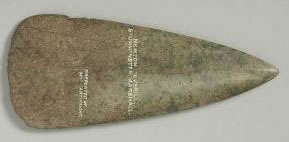
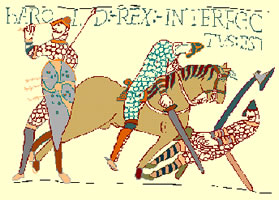
Metal detecting holidays in England with the World's most successful metal detecting club.20 years plus.
Twinned with Midwest Historical Research Society USA.
Interesting News from around the globe
|
Other related stories
Busy year for UK treasure huntersInteresting 5-part video on you tube about Boudica's Treasure
RARE COPPER AGE AXEHEADS DONATED TO MANX NATIONAL HERITAGE Lead curse on a Roman emperor found, with a Roman gold coin. Record Gold Treasure Trove Found Ancient gold necklace discovered in Peru French Celtic coin hoard found - over 500 coins 9-Year-Old Boy Finds $265,000 Medieval Treasure Trove Ancient’ Christian amulet exposed as modern hoax Jade Axe head stays in Britiain 9-Year-Old Boy Finds $265,000 Medieval Treasure Trove
Viking hoard found 19th July 2007
|
Treasure has a tale to tell An ancient pan which may have been a souvenir from Hadrian’s Wall will go on show on Tyneside today . The exhibition at Arbeia Roman fort in South Shields examines the mystery behind the beautifully decorated bronze bowl, which shows exceptional craftsmanship. It was unearthed by metal detectorists Kevin Blackburn and Julian Lee in the Staffordshire Moorlands five years ago. The inscription on the pan names four of the westernmost forts of the Wall – Mais (Bowness), Coggabata (Drumburgh), Uxelodunum (Stanwix) and Cammoglanna (Castlesteads). Hadrian’s Wall is also possibly named for the first time, which shows that the pan was made after AD 122. Archaeologist Alex Croom, based at Arbeia, said: “Although the pan is a small object, it can tell us a great deal about life on Hadrian’s Wall. “The inscription also tells us that the pan was the property of Draco and we are extremely interested in who this character was and what the pan meant to him. Did he make the pan or was he the man for whom the pan was commissioned?” Staffordshire may have been his retirement home. “He was perhaps a veteran of the garrison of Hadrian’s Wall and on his retirement had this vessel made to recall his time in the army,” said Sally Worrall, of the Portable Antiquities Scheme, to which finds are reported. “His name suggests that he or his family originated in the Greek-speaking part of the Roman Empire.” Two other similar vessels bear the names of western forts on Hadrian’s Wall. One is the Rudge Cup, which is held at Alnwick Castle, and was found in 1725, and the other a cup discovered in Amiens in France in 1949. They raise the possibility of a Hadrian’s Wall business dealing in expensive souvenirs. The exhibition, which will also feature Roman objects found at South Shields, runs until the end of April. |
Record Gold Treasure Trove Found20th December 2007
|
Rare find highlights antiquities fears
The battered scraps of metal discovered by Tom Redmayne, an amateur metal detector, in a muddy field in Lincolnshire are a unique find. The mid-fourth century was a time of turmoil in Roman Britain. A Roman aristocrat, Valentinus, had been exiled to Britain where he was stirring up trouble. Thousands of Roman cursing charms survive, scrawled on pieces of lead with a hole punched to hang them up. Many were found thrown into the hot springs in Bath, demanding revenge on those guilty of petty theft. Nothing as audacious as cursing an emperor has ever been found before. However, Sam Moorhead, a coins expert at the British Museum and expert adviser to the Portable Antiquities Scheme, which encourages voluntary reporting of finds, is convinced it is the only explanation. Redmayne's find is unprecedented, but is just one of a torrent of 300,000 valuable, fascinating or downright weird object finds reported by amateurs in the 10 years since PAS was created. It is a time of turmoil for the scheme itself. Leading and amateur archaeologists are joining forces to lobby the government to ring-fence its funding. Lord Renfrew, retired professor of archaeology at Cambridge, calls on the culture department to transfer PAS and its funding to the British Museum, which is facing a budget cut of 25% in the wake of the recent government spending review. · The following clarification was printed in the Guardian's Corrections and clarifications column, Wednesday December 19 2007. The British Museum is not facing a budget cut of 25% in the wake of this year's government spending review, as an editing slip led us to say. The cut is in funding for the Museums, Libraries and Archives Council, which oversees the Portable Antiquities Scheme. |
Wed Dec 5, 8:36 PM ET Limestone sculpture sold
The carved Guennol Lioness, measuring just over eight centimeters (3 1/4 inches) tall, was described by Sotheby's auction house as one of the last known masterworks from the dawn of civilization remaining in private hands. "It was an honor for us to handle The Guennol Lioness, one of the greatest works of art of all time," Richard Keresey and Florent Heintz, the experts in charge of the sale, said in a joint statement. "Before the sale, a great connoisseur of art commented to us that he always regarded the figure as the 'finest sculpture on earth' and it would appear that the market agreed with him," they said. Five different bidders, three on the telephone and two in the room, competed for the sculpture. The successful buyer was identified only as an English buyer who wished to remain anonymous. The sale easily broke the previous record for the highest price for a sculpture at auction, which had stood at 29.1 million dollars and was set just last month at Sotheby's in New York by Picasso's "Tete de Femme (Dora Maar)." It also beat the 28.6 million dollars paid for "Artemis and the Stag," a 2,000-year-old bronze figure which sold also at Sotheby's in New York in June and held the record for the most expensive antiquity to be sold at auction. Described by Sotheby's as diminutive in size, but monumental in conception, The Guennol Lioness was created around 5,000 years ago -- around the same time as the first known use of the wheel -- in the region of ancient Mesopotamia. The piece was acquired by private collector Alastair Bradley Martin in 1948 and has been on display in New York's Brooklyn Museum of Art ever since. Keresey described the work before the sale as "one of the oldest, rarest and most beautiful works of art from the ancient world." "This storied figure, in its brilliant combination of an animal form and human pose, has captured the imagination of academics and the public since it was acquired by the Martins in the late 1940s," he added. The figure depicts a standing lioness looking over her left shoulder, her paws clenched in front of her muscular chest. Experts have speculated that the figure may have played a role in some ancient belief system or mythology in Mesopotamia, which today lies in parts of modern day Iraq, Syria, Turkey and Iran. The proceeds of the auction are to go to a charitable trust formed by the Martin Family. Dorset County Museum successful in purchase of 6,000 year old jade axe-head A polished jade axe-head dating from the early Neolithic, found at Newton Peverill in the Stour Valley, will now stay in the UK following its successful purchase by Dorset County Museum. |
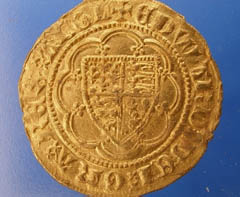
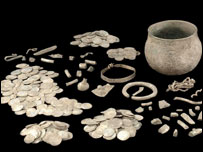
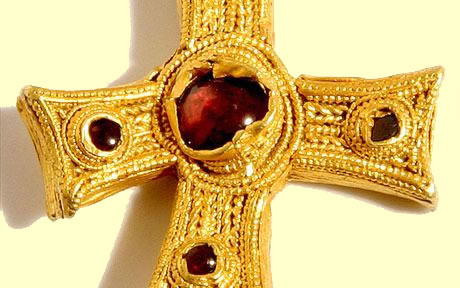

 NEW YORK (AFP) - A tiny and extremely rare 5,000-year-old white limestone sculpture from ancient Mesopotamia sold for 57.2 million dollars in New York on Wednesday, smashing records for both sculpture and antiquities.
NEW YORK (AFP) - A tiny and extremely rare 5,000-year-old white limestone sculpture from ancient Mesopotamia sold for 57.2 million dollars in New York on Wednesday, smashing records for both sculpture and antiquities. 